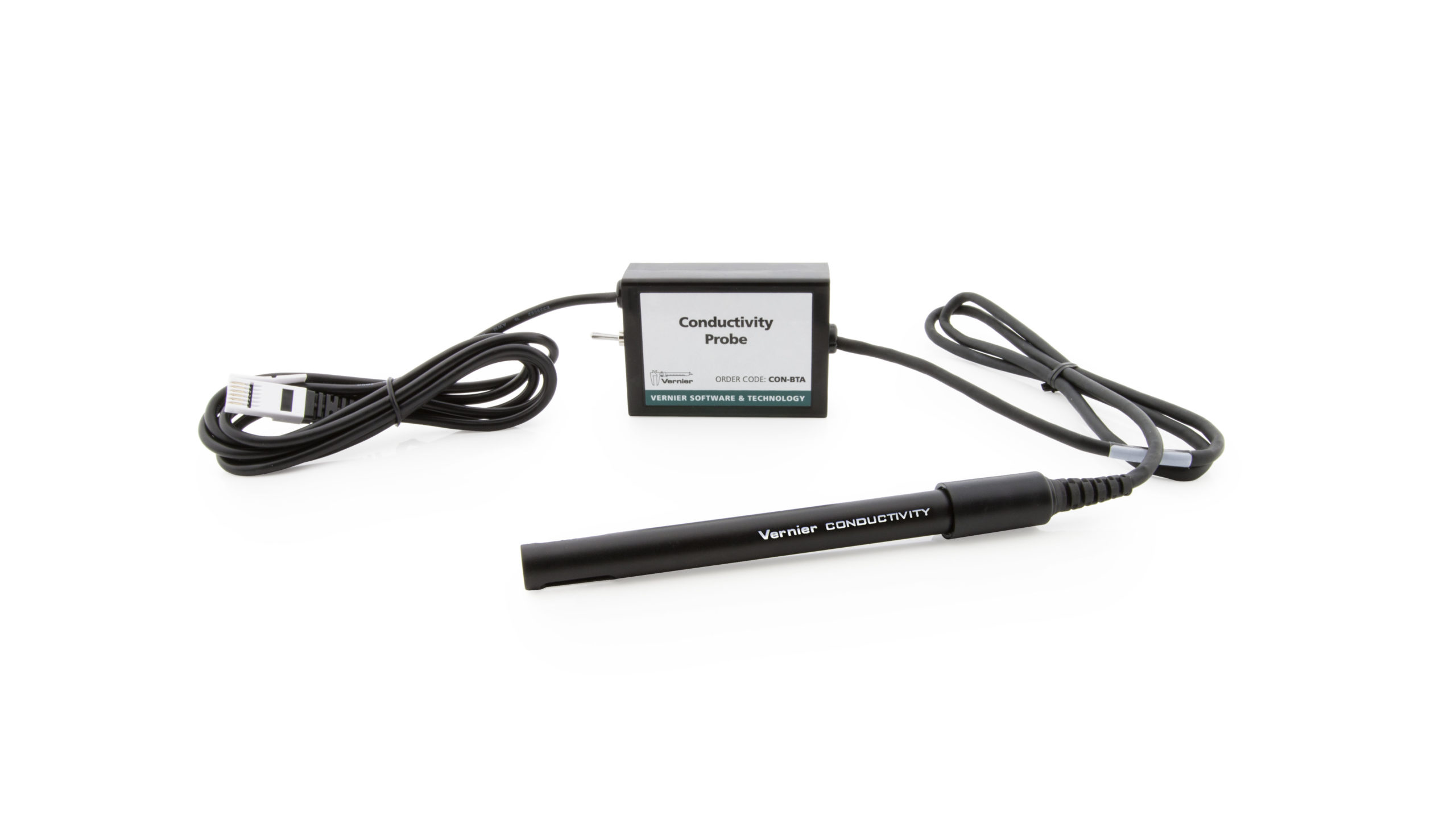Troubleshooting
- Primary Test: Place the toggle switch at the desired setting, run the data-collection program, and take a reading in a solution of known TDS. We suggest using the calibration solution that comes with the probe. It is 500 mg/L TDS or 1000 microsiemens/cm (μS/cm).
- Secondary Test: If you change the setting of the toggle switch while the data collection program is running, reset the program so that the calibration equation for the new setting is selected.
TECH TIPS VIDEO
Additional Troubleshooting
- Will I get interference when I put two sensors in the same solution?
- How do I calibrate a sensor in Logger Pro?
- How do I store the calibration for my sensor using Logger Pro?
- Where do I get Conductivity Standards?
- What material are your Conductivity Probes made of?
- Does the conductivity probe have different calibrations?
- How is the temperature compensation calculated on my conductivity probe (CON-BTA)?
- What chemicals can I use with your conductivity probes?
- What is the difference between salinity and conductivity?
Specifications
- Range:
⚬ Low Range: 0 to 200 μS/cm (0 to 100 mg/L TDS)
⚬ Mid Range: 0 to 2000 μS/cm (0 to 1000 mg/L TDS)
⚬ High Range: 0 to 20,000 μS/cm (0 to 10,000 mg/L TDS) - Typical Resolution:
⚬ Low Range: 0.1 μS/cm (0.05 mg/L TDS)
⚬ Mid Range: 1 μS/cm (0.5 mg/L TDS)
⚬ High Range 10 μS/cm (5 mg/L TDS) - Accuracy using factory calibration:
⚬ ±8% of full-scale reading for low range
⚬ ±3% of full-scale reading for mid range
⚬ ±4% of full-scale reading for high range - Accuracy using custom calibration: ±2% of full-scale reading for each range
- Response Time: 98% of full-scale reading in 5 seconds, 100% of full-scale in 15 seconds
- Temperature Compensation: automatic from 5 to 35 °C
- Temperature Range (can be placed in): 0 to 80 °C
- Cell Constant: 1.0 cm-1
- Description: ABS body, parallel carbon (graphite) electrodes
- Dimensions: 12 mm OD and 150 mm length
- Factory Calibrations
⚬ slope (low range): 65.7 μS/cm/V; intercept 0.0 μS/cm
⚬ slope (mid range): 960 μS/cm/V; intercept 0.0 μS/cm
⚬ slope (high range): 9000 μS/cm/V; intercept 0.0 μS/cm
Calibration
You do not have to perform a calibration for most experiments in the classroom. However, if your experimental application requires more accurate readings, you should calibrate your sensor.
For more information on calibrating a sensor, see How do I calibrate my sensor?
Related Products
- Electrode Support (ESUP)
- Low-Concentration Conductivity Standard Solution (CON-LST)
- Mid-Concentration Conductivity Standard Solution (CON-MST)
- High-Concentration Conductivity Standard Solution (CON-HST)
- Platinum-Cell Conductivity Probe (CONPT-BTA)
- Go Direct® Platinum-Cell Conductivity Probe (GDX-CONPT)
- Go Direct® Conductivity Probe (GDX-CON)

